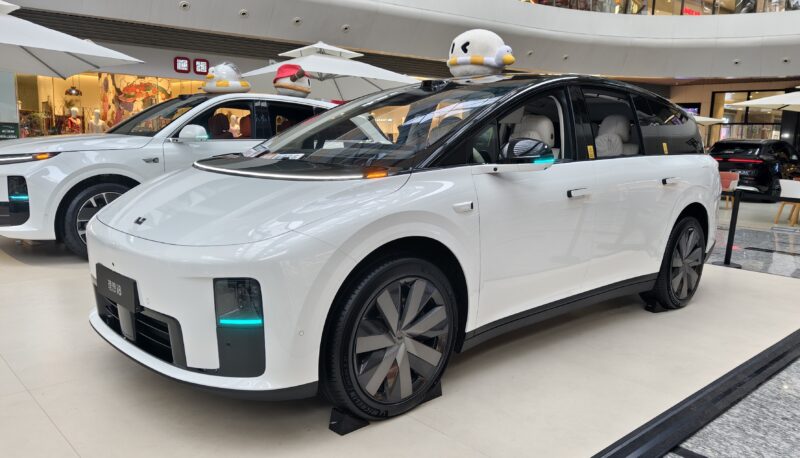Sunday China Drive | Li Auto i8: three-row electric SUV with MPV-like design
The Li Auto i8 is the company’s second fully electric vehicle, following the Li Mega MPV. It enters the market officially as a large three-row pure electric SUV positioned in the mid-to-high-end family segment.
With dimensions of 5085/1960/1740 mm and a wheelbase of 3,050 mm, the i8 competes with other mid-to-large electric SUVs but borrows heavily from the MPV playbook. The model adopts a low-drag design with a coefficient of 0.218 Cd, among the lowest for its size. Li Auto has emphasized practicality and refinement, equipping the vehicle with advanced suspension, intelligent assistance systems, and premium in-car features such as zero-gravity seats and a 21-inch rear entertainment screen.
Pricing and market rollout place the i8 below the Mega MPV, targeting households that want three-row flexibility with a sportier image.
Exterior
The i8 features a streamlined body that reduces air resistance. The front fascia moves the daytime running light strip to the hood line, giving a minimalist appearance where headlights seem hidden. Signal lamps are only 7 mm tall, one of the thinnest in the industry. From the side, the vehicle resembles a teardrop, with flush surfaces and a gradually sloping roofline to improve airflow.
In person, the silhouette is less SUV-like and closer to a large MPV, with a long cabin profile and upright glass areas that emphasize interior space over ruggedness. At the rear, the design is more restrained compared with the Mega’s distinctive tail treatment. Black paint is applied above the beltline, including the roof and pillars, to lower the silhouette visually.
Ground clearance starts low at parking height but can be raised via the air suspension system to enhance stance and usability.
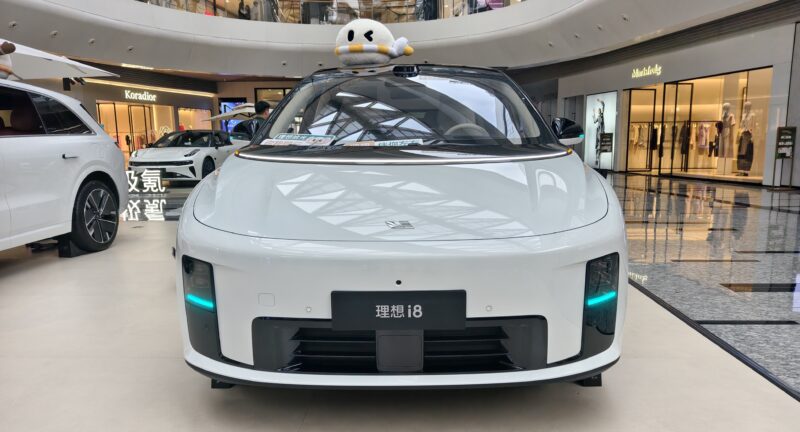
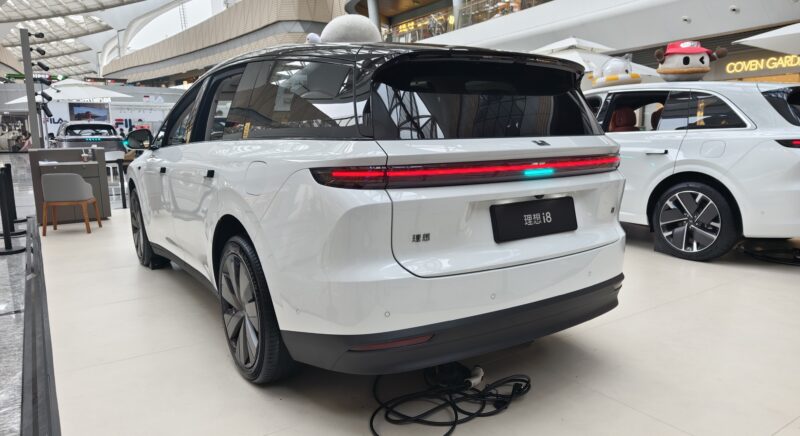
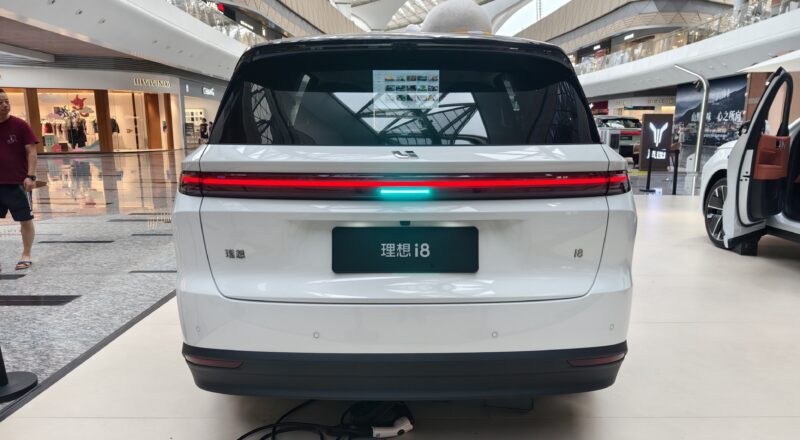
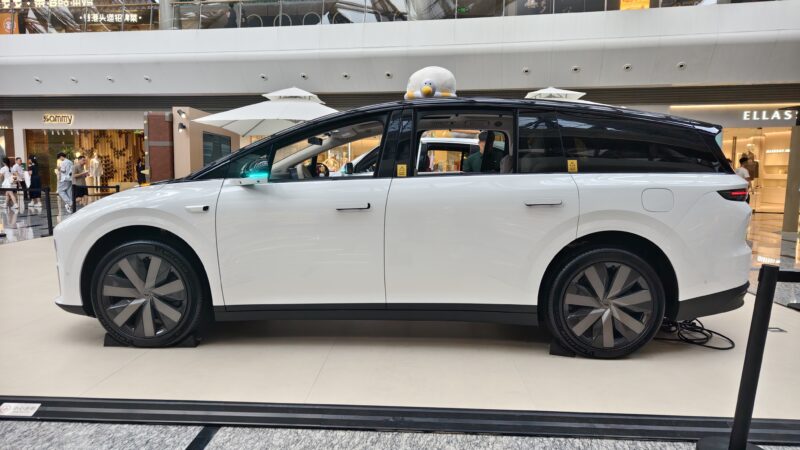
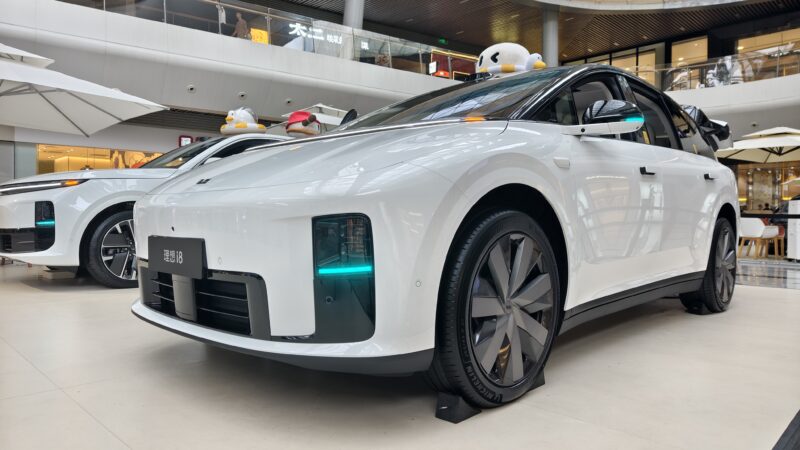
Interior
The i8’s cabin keeps Li Auto’s familiar dual-screen front layout, now joined by a small steering wheel display and a large HUD. The lower seating position and distant windshield create a more car-like cockpit, with sportier seats featuring higher bolsters. Ambient lighting adds full-length LED strips, and multiple colour themes, including brighter tones, are offered to target younger buyers.
In the second row, a zero-gravity seat with extended leg support is operated through voice or screen controls. A foldable tray, climate display, and large refrigerator add utility, while a 21-inch motorized roof display, with app and Bluetooth remote control, comes bundled with a streaming rearview mirror. The third row provides one of the more natural seating positions in the segment, with adequate legroom, a flat floor, and some headroom compromise from the sloping roofline.
Large door openings aid entry, though sliding doors are absent. The second row adjusts for legroom and recline, and its raised base leaves footwell space for third-row passengers. Cargo capacity is moderate, fitting several 20-inch suitcases, with limited hidden storage. Folding the third row expands space but leaves a step in the floor rather than a flat surface.
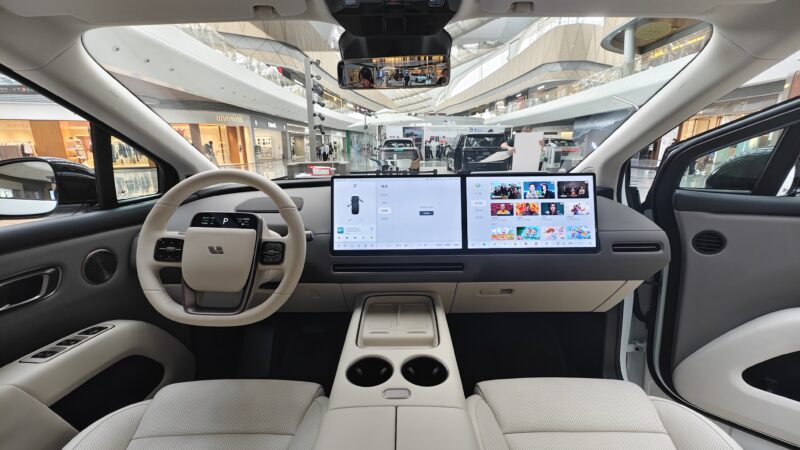
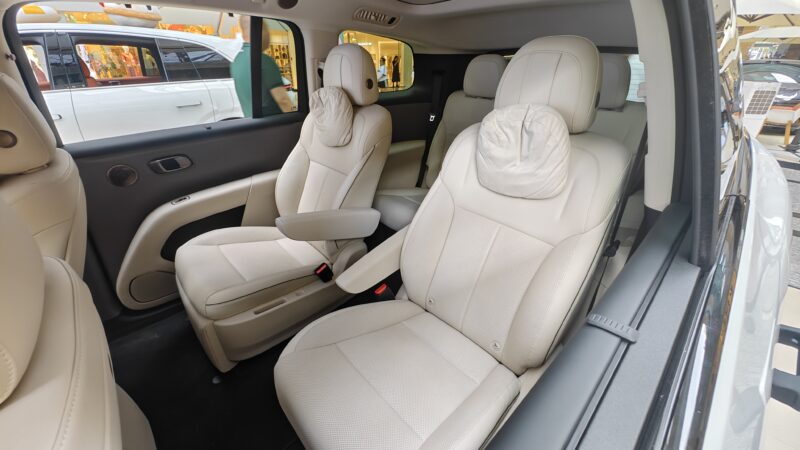
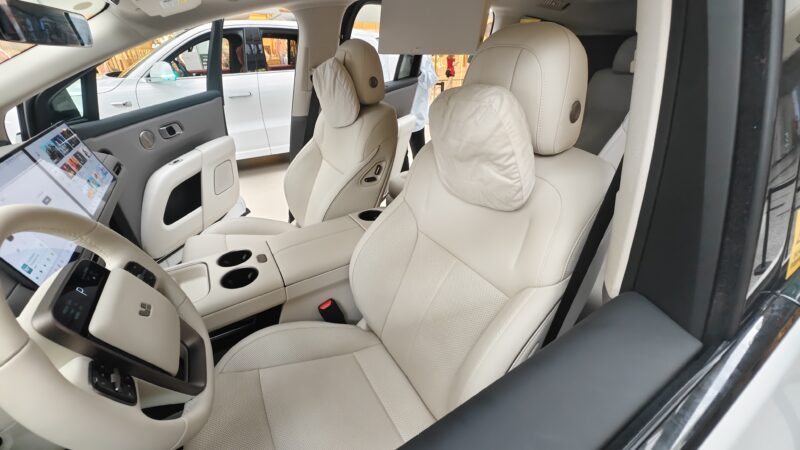
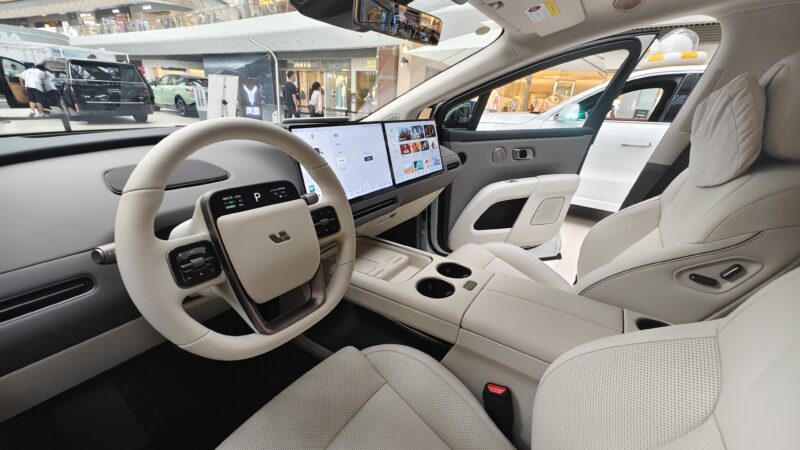
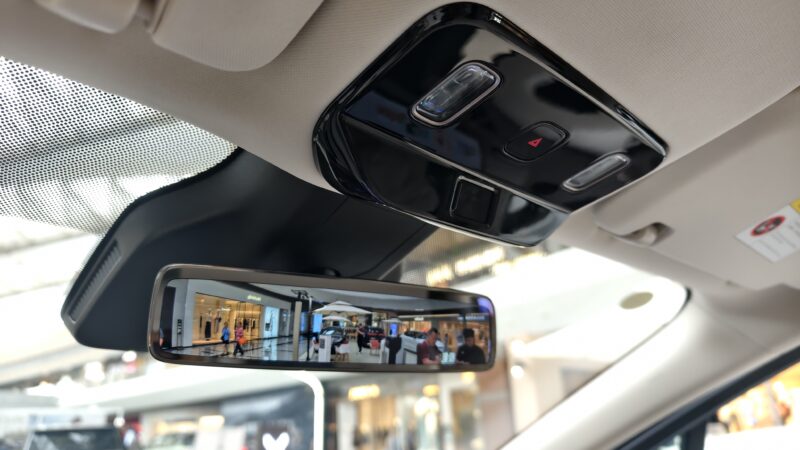
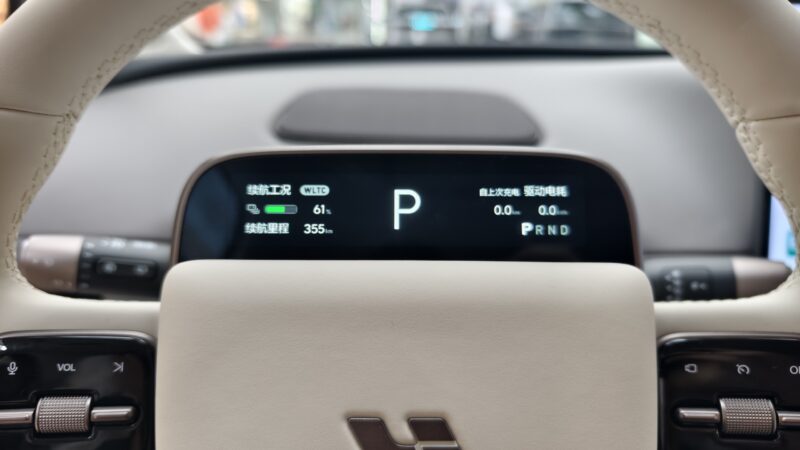
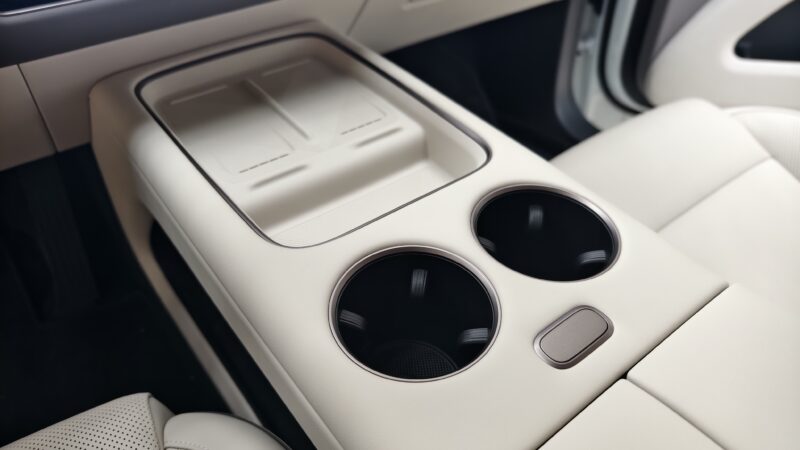
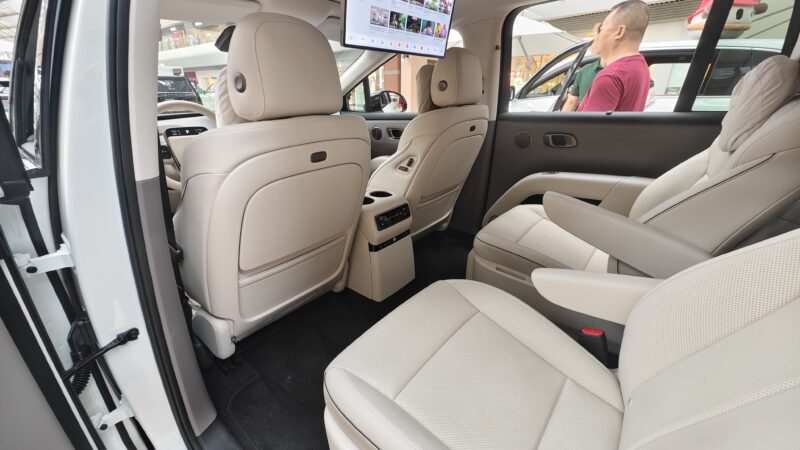
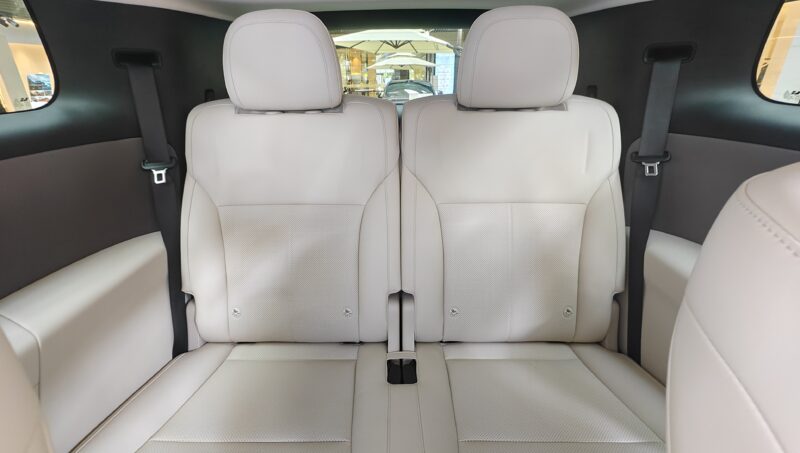
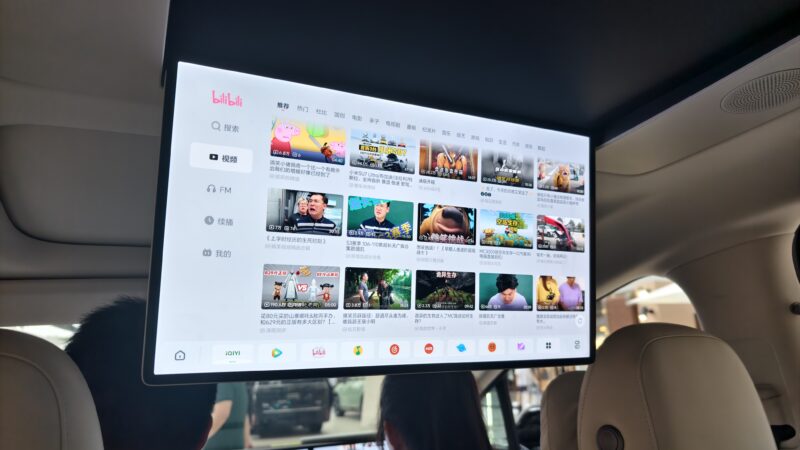
Driving Experience
In urban driving, adaptive damping helps the vehicle absorb broken pavement and speed bumps, though sharper ridges remain noticeable compared with traditional luxury SUVs. Visibility is generally good, though the sloping roofline slightly limits rear sightlines. Noise insulation is strong, keeping tire and suspension sounds in check at urban speeds and limiting wind noise around mirrors and pillars on expressways.
On highways, the Li Auto i8 feels stable and secure, aided by a wide track, carefully tuned suspension, and well-balanced weight distribution. The dual-motor AWD version delivers brisk acceleration and strong passing power. Steering is calibrated for confidence, offering clear feedback without being overly sharp, making long-distance driving stable and manageable.
Regenerative braking has been carefully calibrated, with multiple levels allowing both light deceleration and near one-pedal driving. Transitions between regenerative and mechanical braking are smooth. Energy consumption averages around 17 kWh/100 km, and the i8 supports Li Auto’s 5C fast-charging network for rapid recharging on long trips. While exact CLTC ranges are not confirmed, the SUV is positioned to meet family travel needs with efficient energy management and reliable charging infrastructure.
The i8 includes Li Auto’s driver-assistance suite, covering lane-keeping, automatic lane changes, and automated parking. The system performs reliably on highways, handling lane merges and traffic scenarios effectively. In complex urban conditions, such as navigating bicycles, pedestrians, or irregular traffic, assistance shows some limitations, highlighting areas for future refinement.
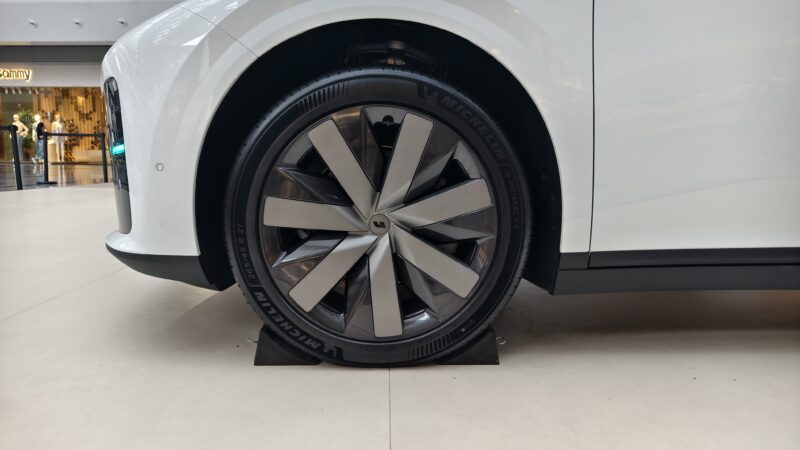
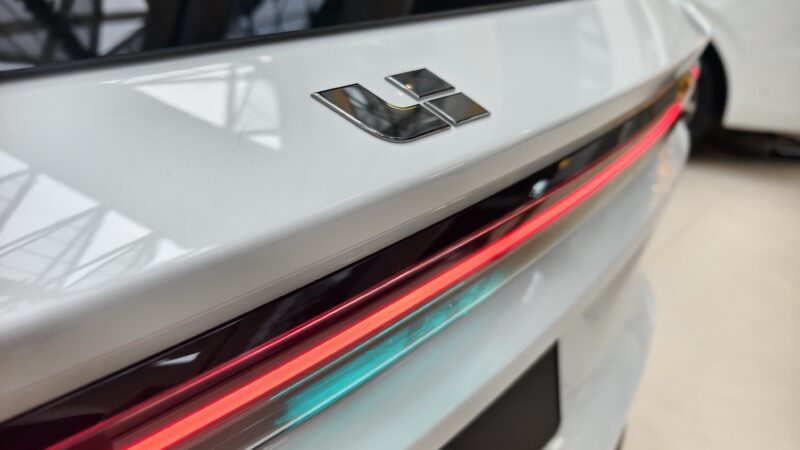
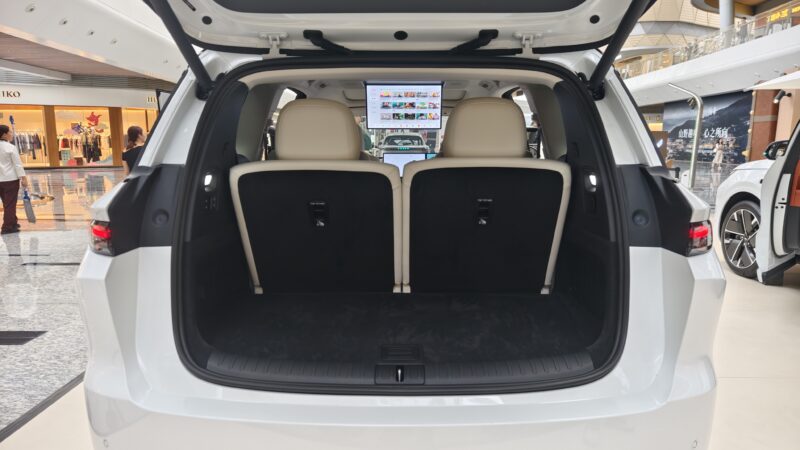
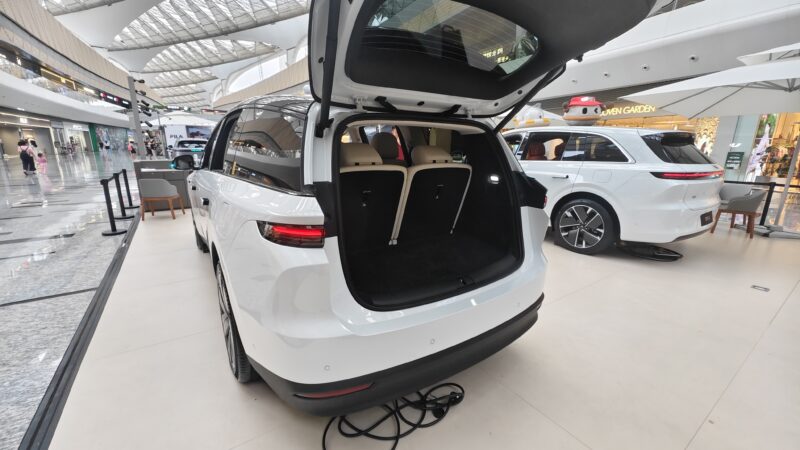
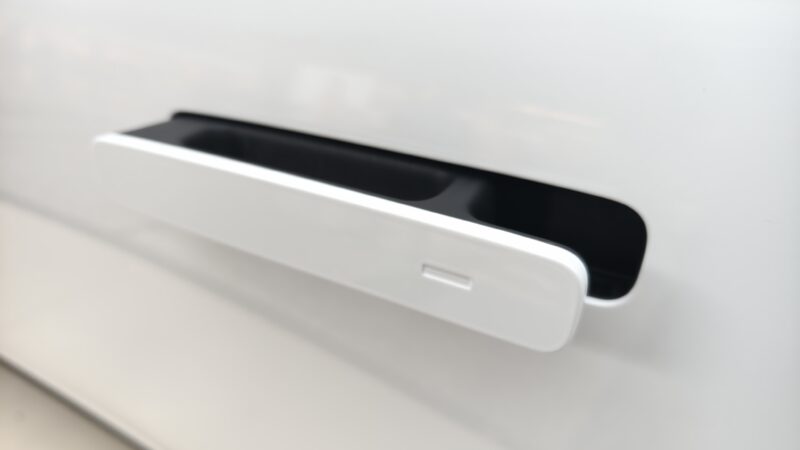

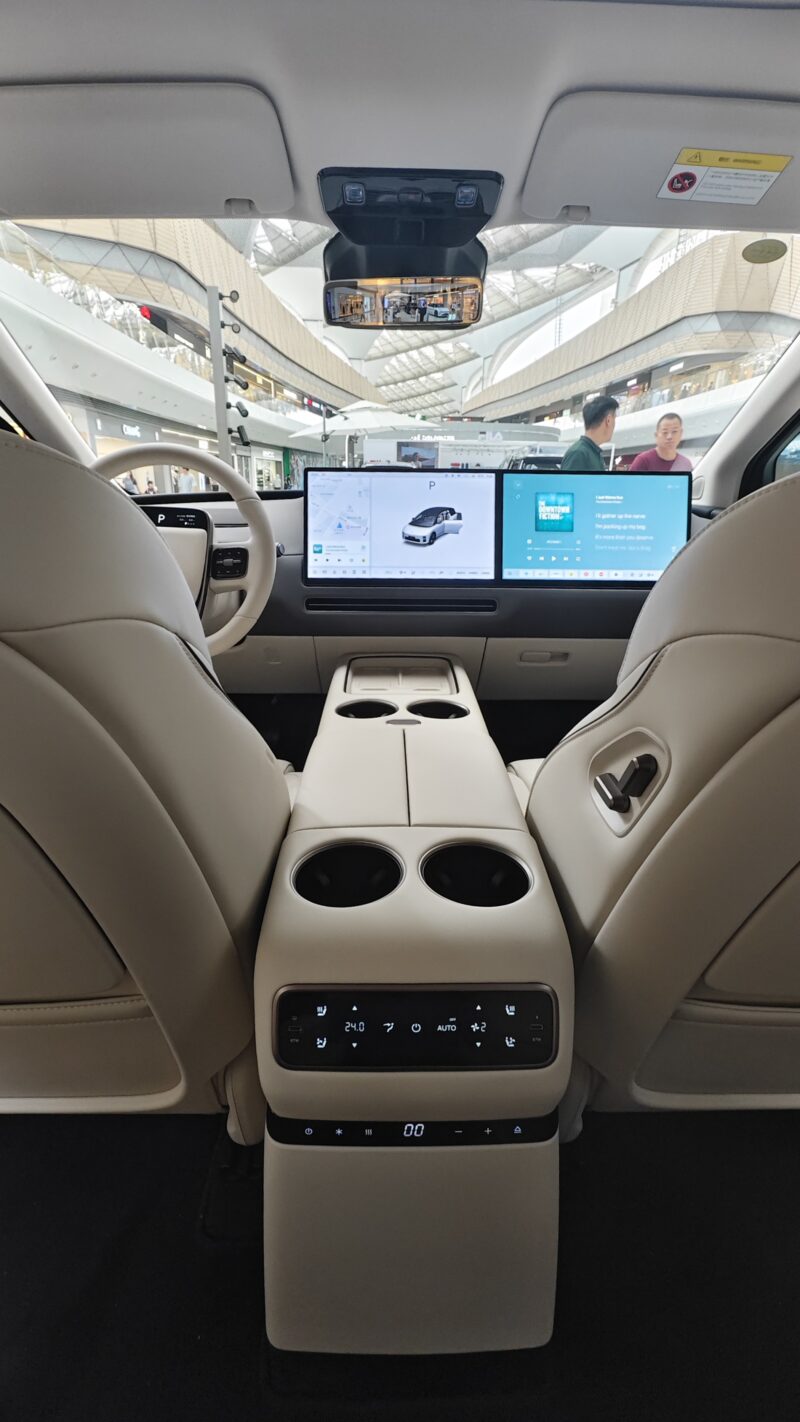
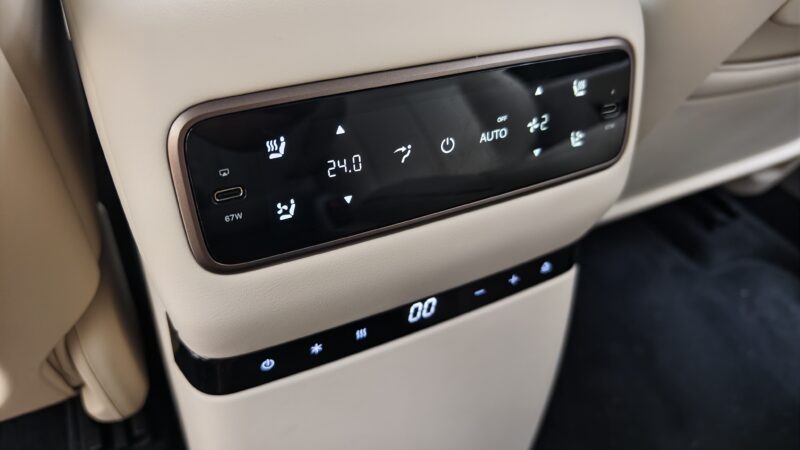
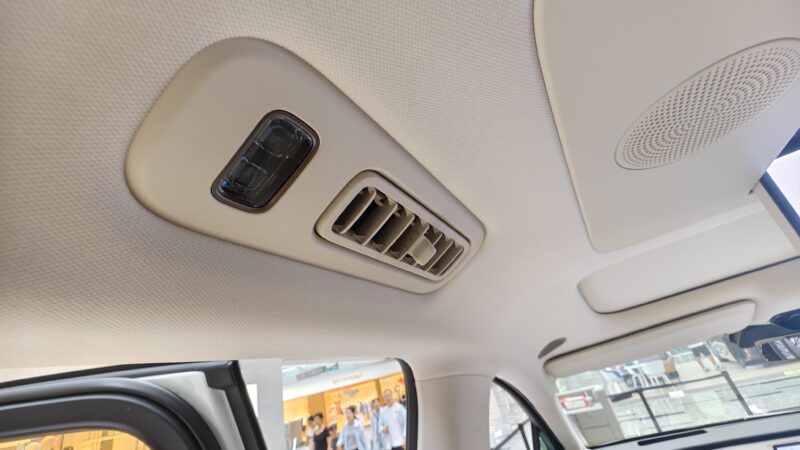
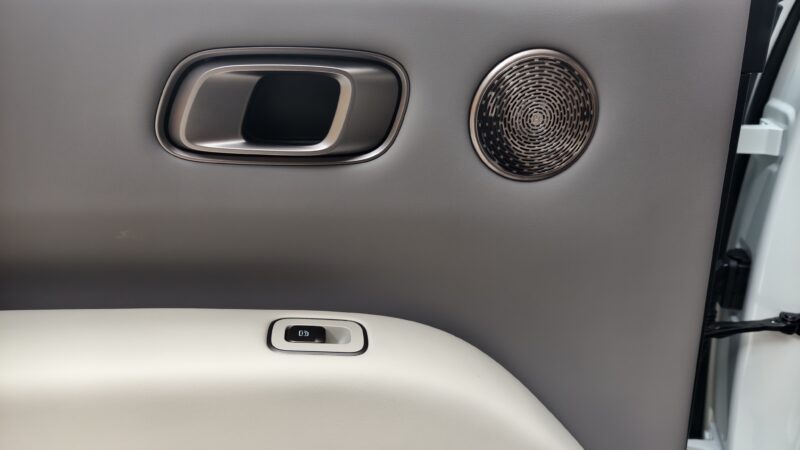
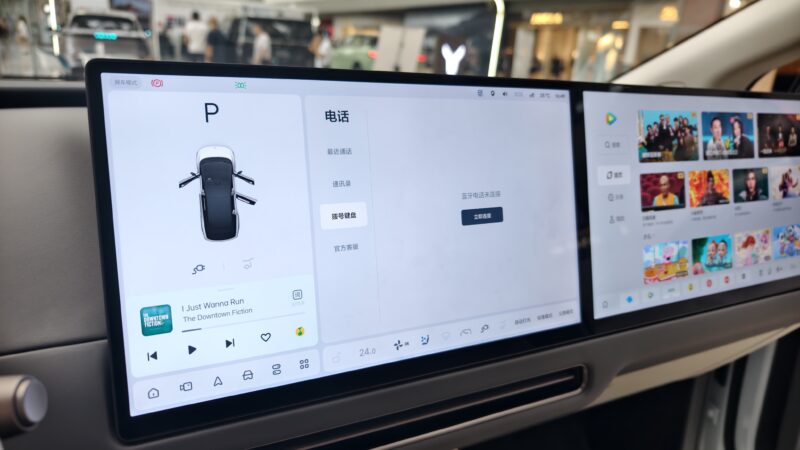
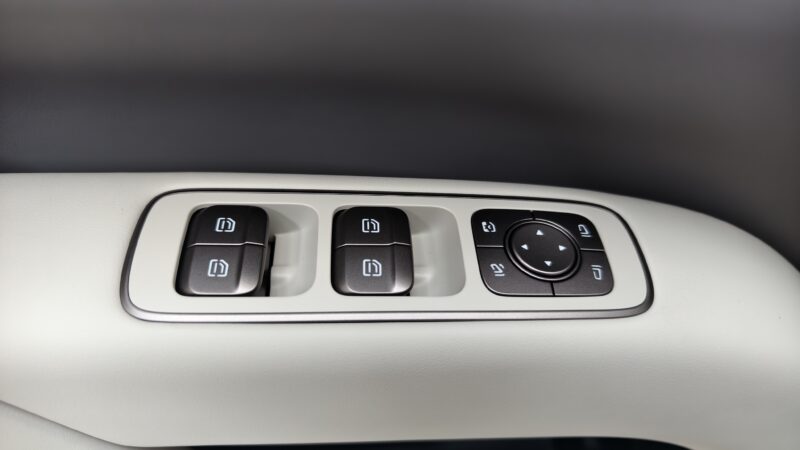
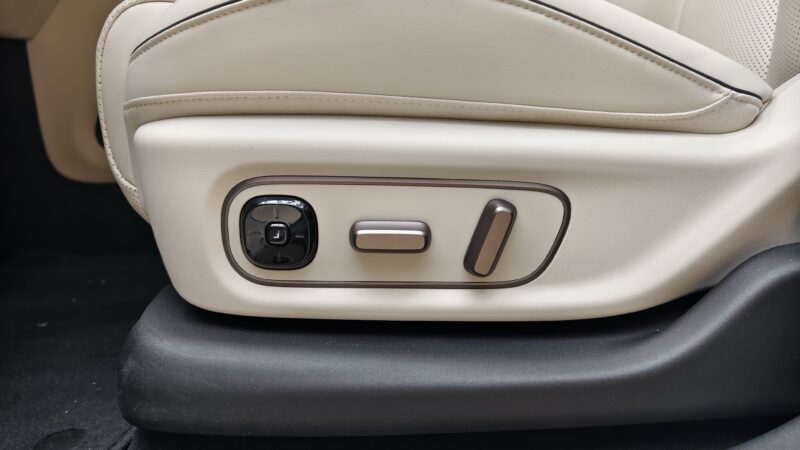
Verdict
The Li Auto i8 is officially positioned as a family-oriented three-row electric SUV, yet in practice, its design and cabin layout lean strongly toward MPV characteristics. It prioritizes aerodynamics and efficiency while offering practical features such as the zero-gravity seat, 21-inch rear display, and large refrigerator. Space utilization is effective across all three rows, though cargo flexibility is not class-leading.
Driving dynamics surpass the brand’s earlier L series models, and efficiency paired with 5C charging enhances usability. Shortcomings include reliance on voice controls instead of physical seat buttons and limited hidden storage. Overall, the i8 consolidates Li Auto’s presence in the electric people-mover segment, delivering a product that blends SUV marketing with MPV practicality.
Stay tuned for next week’s Sunday China Drive at Car News China, where you can read more first-person evaluations of Chinese cars.



